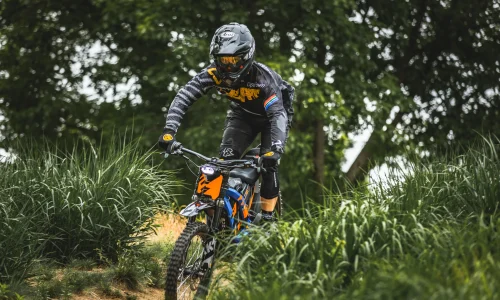Land assessment presents a number of challenges for surveyors. Surveying can be a time-consuming and difficult task due to limited accessibility, changes in topography, poor visibility, and weather events.
Many industry professionals use unmanned aircraft vehicles, also known as drones, to streamline surveying. Recent advances in UAV technology have made surveying easier than ever.
Professional land surveyors can reap many benefits as drones become more affordable and robust. It’s important to understand drones because of their increasing usefulness.
What is Drone surveying?
Drone surveying is the use of a drone for aerial data collection about different geographies and terrains.
A drone survey is conducted by a pilot who deploys an UAV near the Survey site. Once the drone is in the air the pilot will fly it over the land plot and collect data with sensors such as multispectral or RGB cameras.
Drone surveying, due to its flexibility and ease of usage, is an affordable and flexible way to improve your land surveying and expand data collection efforts.
Drone surveying, due to its flexibility and ease of usage, is an affordable and flexible way to improve your land surveying efforts.
Drone surveying deliverables
Drones are capable of creating a wide range of assets such as orthomosaics and 3D land models. Operators can use this information to gain a highly accurate and insightful land assessment, leading them to make better decisions and report more accurately for both private and public land conservation and development projects.
Drone operators can capture data which will allow them to produce the following deliverables.
Photos and Videos
Drones use high-definition cameras and photos to collect the simplest assessments. They are useful for preliminary research and ongoing site assessments.
3D Models
Drones are capable of producing 3D surface models, which can be used for topographic mapping that is highly detailed and advanced.
You can create 3D model using drones by collecting ground point. Once you’ve collected the ground points, run them through modeling software to create a 3D cloud of data points.
Orthophotos
A type of aerial photo that uses geographical correction to create images with uniform scale is an orthophoto.
Orthophotos can be used to measure the distance between two points. Orthophotos also take into account several factors, such as lens distortion, topographic relief, and other aspects.
What are the benefits of drone surveying?
Drones can be a big change for those who are used to using tools such as composite tripods and locators. This new, modern approach may take some time to get used to.
Yet while drone surveying may seem intimidating at first, it’s ultimately just another tool that you can use to work smarter and more efficiently–remaining competitive while boosting your bottom line.
We’ll look at some of the benefits that drones can bring to geographic data collection.
Low Altitude Flight
Drones allow surveyors to collect data without having to rely on satellites, crewed planes or balloons. Drones are able to fly at lower altitudes and capture data more precisely.
Drones are also able to fly in areas that would be difficult or impossible for traditional aerial vehicles to reach. Drones can fly into areas that are too densely forested, mountainous or urban to be captured by helicopters or planes.
Drones are also able to fly in areas that are difficult or impossible for traditional aerial vehicles to reach.
Comprehensive Imaging
Drones are also able to capture multiple images from different angles and elevations of the same location. This data can be used to get a detailed view of an area. You can see the properties from various angles and perspectives.
To make the surveying process easier, teams will often use several drones simultaneously. By using multiple drones, you can capture images more quickly and efficiently while covering more ground.
Ongoing Analysis
Land borders can be difficult to track as the topography of the land changes over time. Some changes may be gradual. Trees disappear and property boundaries shift when rivers or streams change their course. New construction and weather events can also cause changes in topography.
You can use drones to conduct land surveys periodically. This allows for improved historical reporting and rapid response surveys.
Sustainability Support
Drones can be used to boost sustainability. They emit less emissions when inspecting compared to vehicles, trucks, helicopters and aircraft.
Drones can also help access areas of the environment that are difficult to reach, such as forests, coastal zones, and population centres. Drones can be used to provide continuous assessments for conservation efforts and climate changes.
Productivity can be improved
The traditional methods of land surveying are time-consuming and limit the number jobs a surveyor can perform during the day. With the use of drones you can cover more land at a faster rate, allowing you to quickly analyze entire neighborhoods and large areas of land.
Best Practices for Drone Surveying
Federal Aviation Administration (FAA) has made drone surveying a legal and exciting technology.
There are a few important rules and regulations you should be aware of, before buying a drone or flying it for the very first time. Follow these best practices for the best results and to avoid potential mishaps.
Drone Insurance: Compare Prices
You must have insurance to use drones for commercial purposes. It’s therefore important to compare insurance plans that meet your needs.
Drone insurance can cost anywhere between $500 and $750 per annum. United States Aircraft Insurance Group (USAIG) and BWI Fly are two popular options.
Ensure you have an FAA license
The FAA requires that pilots have insurance and also obtain an official Remote Pilot Certificate. The FAA outlines all the requirements for obtaining a Certificate of Remote Pilot.
FAA Restrictions
The FAA has set forth specific rules governing what type of drones you are allowed to operate and how you may use them. According to the FAA Part 107 guidelines, small drones weighing less than 55 pounds can be used for business purposes. Any drone weighing over 55 pounds will require special permission.
In the US, drones are not allowed to fly above 400 feet for land surveys. If you plan to fly at night, you will need a special licence. HeliDrone Surveys – Roof Inspections | Drone Aerial Survey Company
Staying within the acceptable airspace is also very important, especially when recording video footage. Trespassing is when you fly over or film private property. You could be fined and face civil penalties.
Consider Going Beyond Visual Line of Sight
The drone must remain within the line of vision of the pilot when surveying the land. The drone cannot fly behind a mountain, building, bridge or other obstruction. This can be a problem depending on what you’re doing.
A drone that disappears from a pilot’s view becomes a beyond-visual-line-of-sight (BVLOS) operation. This requires certain technologies, like an onboard detect and avoid component. Flying BVLOS requires FAA approval.


